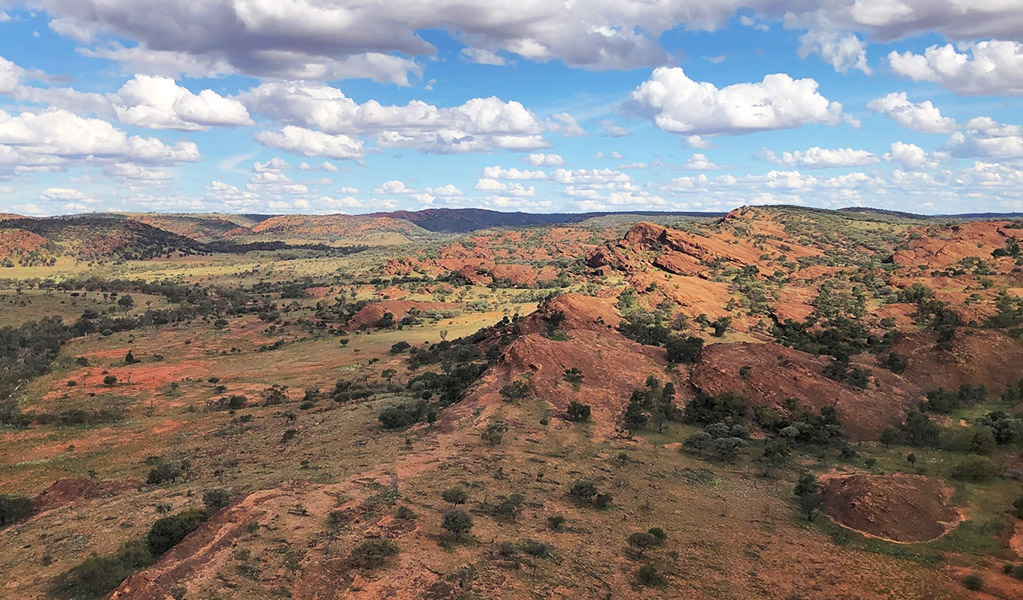Split Rock walking track
Mutawintji National Park
Overview
Explore the rugged outback landscape of Mutawintji National Park along Split Rock walking track. This wild walk near Broken Hill is significant to Aboriginal women's cultural practices.
- Where
- Mutawintji National Park in Outback NSW
- Distance
- 6km return
- Time suggested
- 3 - 4hrs
- Grade
- Grade 5
- Trip Intention Form
-
It's a good idea to let someone know where you're going. Fill in a trip intention form to send important details about your trip to your emergency contact.
- Please note
- Aboriginal Owners advise that only women should be within 100m of Split Rock.
- Grey kangaroos live in this area of the park, it’s a good idea to appreciate these powerful animals from a distance.
- A topographic map, compass or GPS will be handy in this remote area.
Split Rock walking track is an adventurous but peaceful walk to add to your outback discovery itinerary. It’s starts at the end of Old Coach Road drive, a historic coach run that passes the ruins of the Rockholes Hotel.
Most of the area is part of the remains of a 400-million-year-old sea that’s been eroded to form jagged ranges. Mulga grass, mulga wattle and river red gum add some green to this iconic red dirt scenery. While the desert environment can seem harsh, it's home to kangaroos, wallabies, emus and lizards.
You'll pass Eagle Rock and Boomerang Rock with views of Peregrine Pass in the distance. The track ends at Split Rock, a meeting point for Aboriginal women. While anyone is welcome to walk the track, please respect the cultural protocols advised by Aboriginal owners which only allow women to walk within 100m of Split Rock. The traditional home of the Pantjikali, Wanyuparlku, Wilyakali and Malyangapa people, many locations in Mutawintji National Park are significant meeting places and have been for thousands of years.
The track is in a wilderness area with limited directional signage. It’s a good idea to stop at the self-service Mutawintji Visitor Centre to get an informational brochure. If you plan to trek beyond Split Rock, please complete a trip intention form to stay safe.
Also see
-

Mutawintji Visitor Centre
The visitor centre is on your left as you enter the Mutawintji Park. It is unstaffed, but provides a general introduction to the park for visitors. It is also a good place to stop and get your bearings and use the facilities.
-

Old Coach Road drive
The Old Coach Road drive is a piece of Australian history, following a section of the historic Broken Hill to White Cliffs Coach Run that connected these two outback towns.
-

Homestead Creek campground
Head to Homestead Creek campground on your outback NSW tour. Featuring caravan and motorhome campsites, this well-equipped campground is a great base to explore the park.
Map
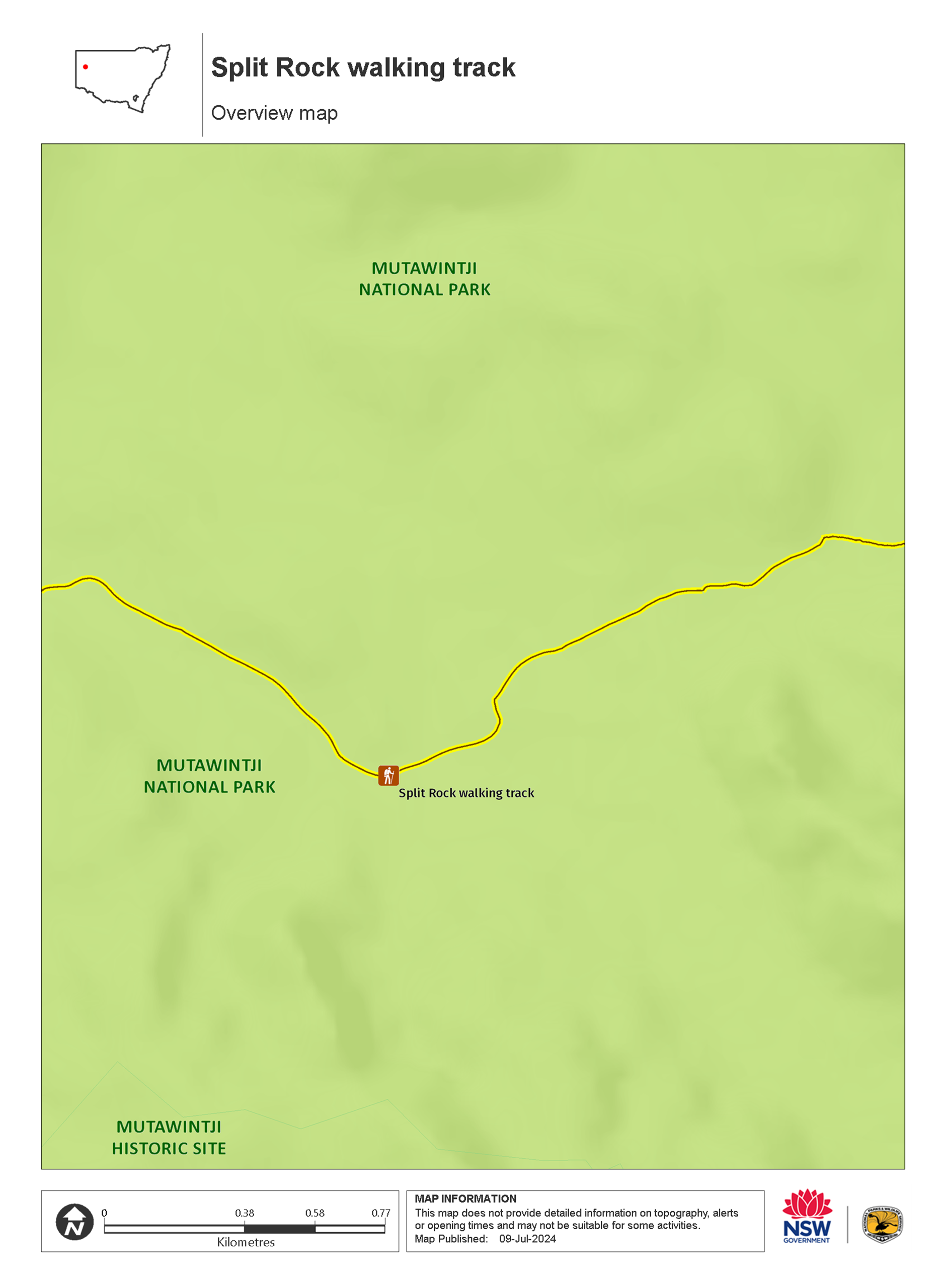
Map legend

Local alerts
For the latest updates on fires, closures and other alerts in this area, see https://www.nationalparks.nsw.gov.au/things-to-do/walking-tracks/split-rock-walking-track/local-alerts
General enquiries
- National Parks Contact Centre
- 7am to 7pm daily
- 1300 072 757 (13000 PARKS) for the cost of a local call within Australia excluding mobiles
- parks.info@environment.nsw.gov.au
Park info
- in Mutawintji National Park in the Outback NSW region
Mutawintji National Park is always open but may have to close at times due to poor weather or fire danger.
Visitor info
All the practical information you need to know about Split Rock walking track.
Maps and downloads
Visitor centre
-
Mutawintji Visitor Centre
51 Old Coach Road, Mutawintji, NSW 2880 - Mutawintji Visitor Centre is always open but it's unstaffed (self service).
Learn more
Split Rock walking track is in Mutawintji National Park. Here are just some of the reasons why this park is special:
A wildlife wonderland
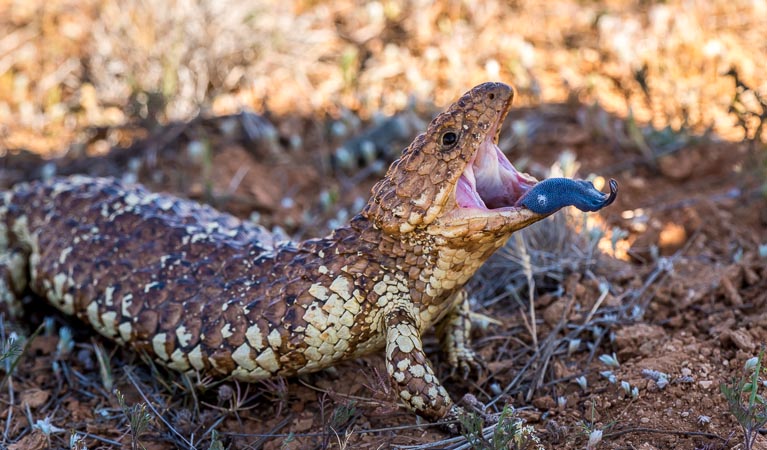
It might feel peaceful here, but Mutawintji teems with the wildlife that has occupied these lands since ancient times. You might see a wedge-tailed eagle or even a peregrine falcon and enjoy the chatter of noisy short-billed correllas, zebra finches, budgerigars, apostle birds and magpies. Crossing your path may be goannas and snakes, and look out for members of the only colony in NSW of the endangered yellow-footed rock wallaby. The largest of the rock-wallabies, it is Australia's most brightly coloured mammal - look for them on rocky ridges in the park.
- Homestead Gorge walking track Take a breathtaking walk along Homestead Gorge walking track for scenic landscape vistas and ancient Aboriginal rock engravings. Plus you might see wallabies, emus and birds.
- Old Coach Road drive The Old Coach Road drive is a piece of Australian history, following a section of the historic Broken Hill to White Cliffs Coach Run that connected these two outback towns.
An important Aboriginal site
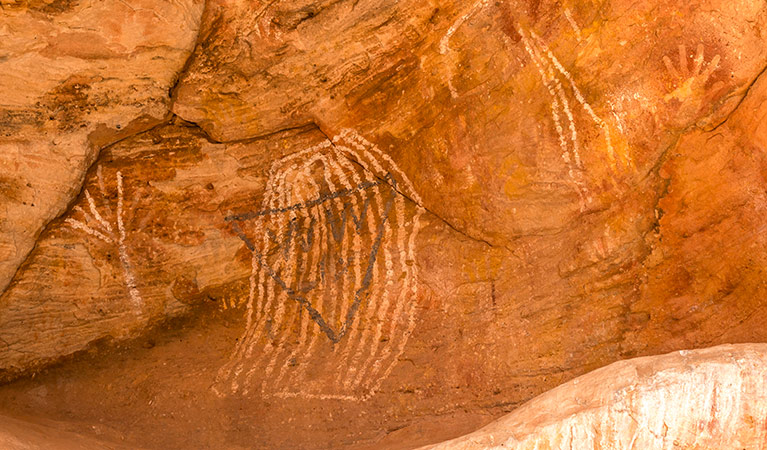
The traditional home of the Pantjikali, Wanyuparlku, Wilyakali and Malyangapa people, Mutawintji National Park has been a significant meeting place for local cultures for thousands of years. Communities have performed initiations, rainmaking and other ceremonies here in gatherings of up to 1000 people. A short, easy walk, suitable for wheelchairs, will guide you amid the splendour of Mutawintji's gorges to the rocky overhang Thaaklatjika (Wright's Cave). Here you'll find paintings, stencils and engravings that depict pre and post colonial Aboriginal history, as well as the animals that live in the area, including kangaroos and emus.
- Homestead Gorge walking track Take a breathtaking walk along Homestead Gorge walking track for scenic landscape vistas and ancient Aboriginal rock engravings. Plus you might see wallabies, emus and birds.
- Mutawintji cultural tour Join this special tour in Mutawintji National Park in the NSW outback and hear Aboriginal guides share their connection to their Country.
- Rockholes Loop walking track Rockholes Loop walking track is an adventurous extension to Homestead Gorge walking track, in Mutawintji National Park. This short but steep hike includes Aboriginal engravings and splendid views of rockholes, Homestead Gorge and Bynguano Range.
- Wiimpatja campfire yarn in Mutawintji Gather around the campfire under the desert sky in Mutawintji National Park. Listen to your Aboriginal guide's stories while tasting bush tucker.
Iconic scenery
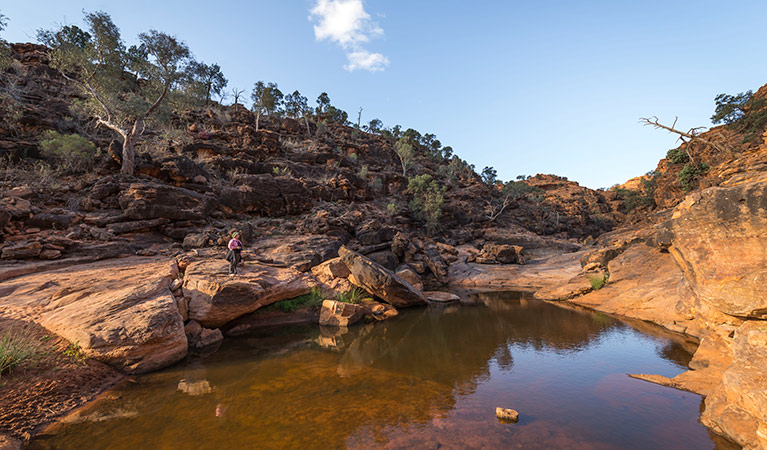
Mutawintji National Park displays the classic outback landscape for which Australia is famous around the world. Driving along red dirt roads among rugged gorges and desert, against the backdrop of the ever-changing colour of the Byngnano Ranges, you'll discover the peace and space of the desert. Beyond the ridges, the saltbush and mulga plains stretch to the horizon, making city life seem a long, long way away.
- Homestead Gorge walking track Take a breathtaking walk along Homestead Gorge walking track for scenic landscape vistas and ancient Aboriginal rock engravings. Plus you might see wallabies, emus and birds.
- Mutawintji cultural tour Join this special tour in Mutawintji National Park in the NSW outback and hear Aboriginal guides share their connection to their Country.
- Mutawintji Gorge walking track Mutawintji Gorge walking track takes you on a hike through one of the park’s most scenic gorges. Enjoy a picnic at the end or simply spend some time taking in the view.
- Rockholes Loop walking track Rockholes Loop walking track is an adventurous extension to Homestead Gorge walking track, in Mutawintji National Park. This short but steep hike includes Aboriginal engravings and splendid views of rockholes, Homestead Gorge and Bynguano Range.
- Split Rock walking track Explore the rugged outback landscape of Mutawintji National Park along Split Rock walking track. This wild walk near Broken Hill is significant to Aboriginal women's cultural practices.
Plants and animals protected in this park
Animals
-

Wedge-tailed eagle (Aquila audax)
With a wingspan of up to 2.5m, the wedge-tailed eagle is Australia’s largest bird of prey. These Australian animals are found in woodlands across NSW, and have the ability to soar to heights of over 2km. If you’re bird watching, look out for the distinctive diamond-shaped tail of the eagle.
-

Red kangaroo (Macropus rufus)
The red kangaroo is one of the most iconic Australian animals and the largest marsupial in the world. Large males have reddish fur and can reach a height of 2m, while females are considerably smaller and have blue-grey fur. Red kangaroos are herbivores and mainly eat grass.
-

Emu (Dromaius novaehollandiae)
The largest of Australian birds, the emu stands up to 2m high and is the second largest bird in the world, after the ostrich. Emus live in pairs or family groups. The male emu incubates and rears the young, which will stay with the adult emus for up to 2 years.
Plants
-

Sturt's desert pea (Swainsona formosa)
One of Australia’s most famous desert wildflowers, Sturt’s desert pea is found across inland arid regions of Australia, including far west NSW. One of the most easily-recognised Australian native plants, Sturt’s desert pea thrives in red sandy soil, or loam, and has vibrant red leaf-shaped flowers with a black centre, known as a ‘boss’.
-

Saltbush (Atriplex nummularia)
A hardy Australian native plant, the saltbush is a small spreading shrub that can withstand dry salty soils such as those found in the desert plains of western NSW. It is grey-white in colour and has small spear-shaped succulent leaves. It flowers from December to April.

